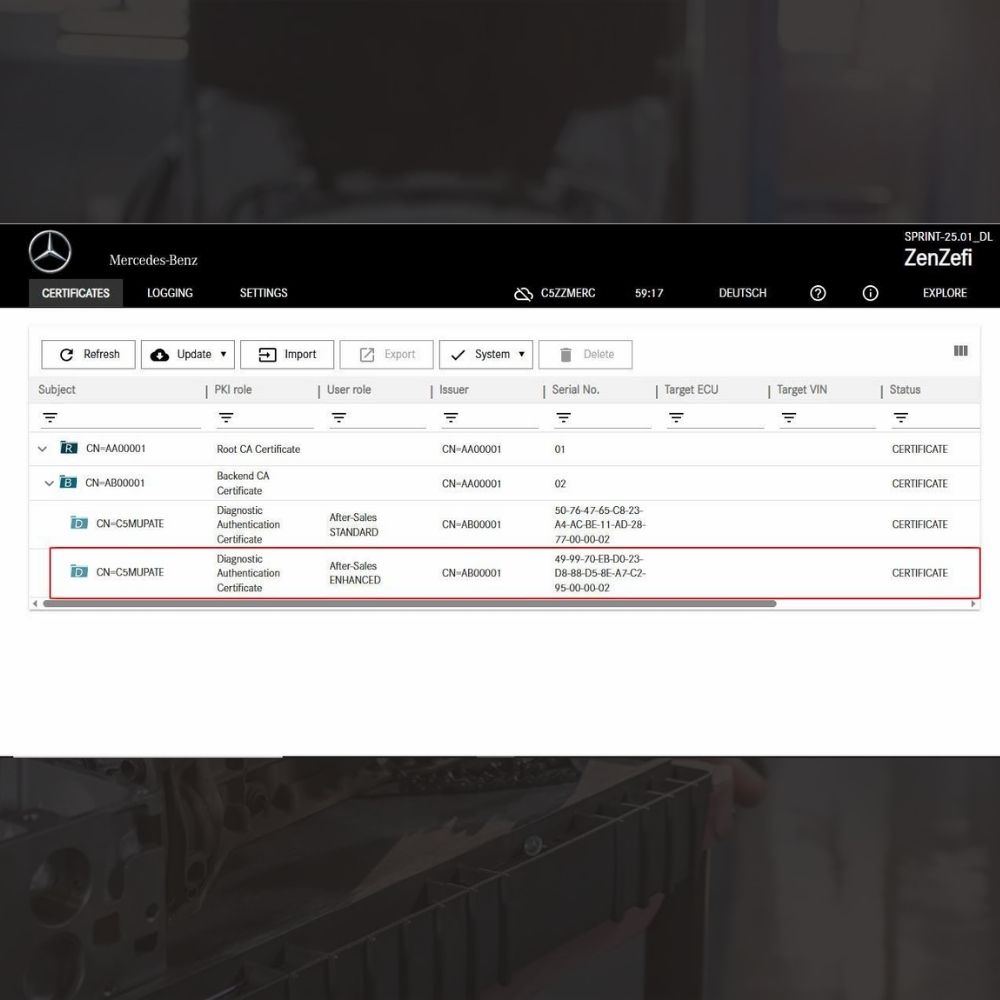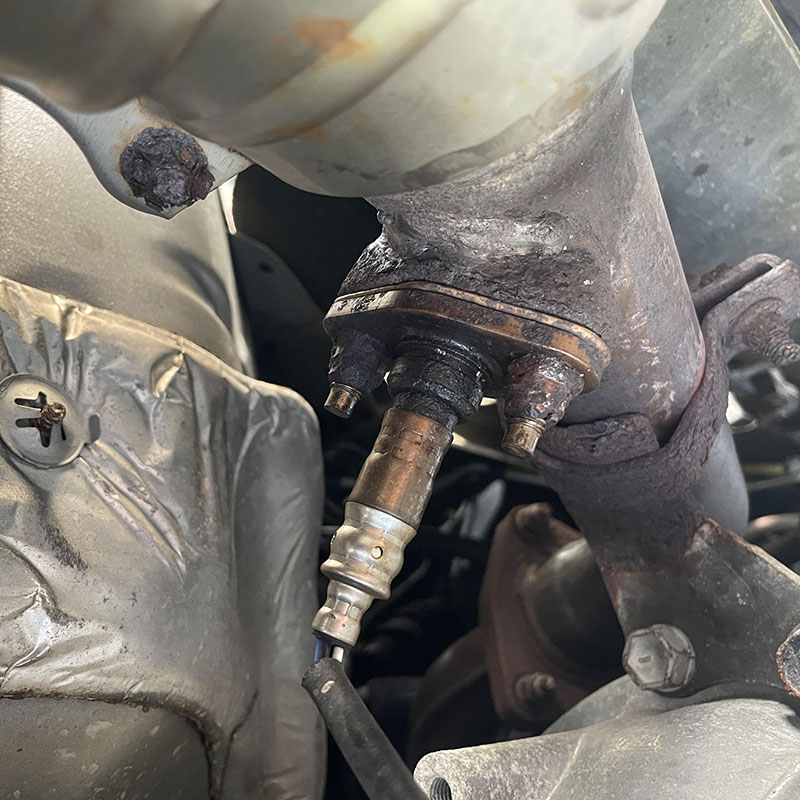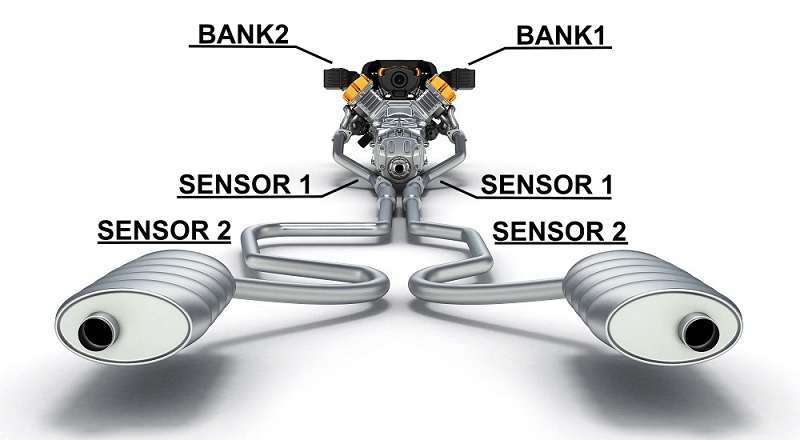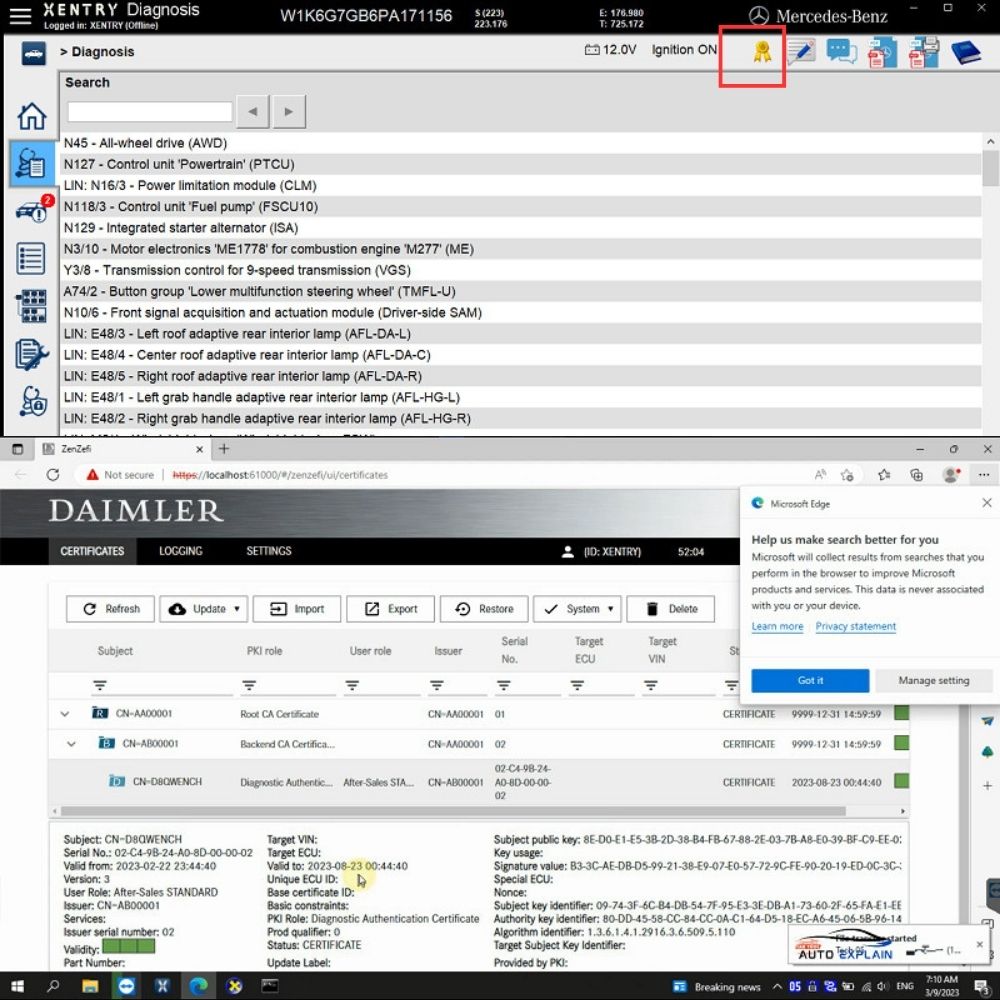

Oxygen Sensor Bank 1: Location, Function, and Common Issues Explained
Contents
- What is an Oxygen Sensor Bank 1?
- How Does an Oxygen Sensor Bank 1 Work?
- Common Oxygen Sensor Bank 1 Problems
- Diagnosing Oxygen Sensor Bank 1 Issues
- How to replace Oxygen Sensor Bank 1
- When Should I Replace My Oxygen Sensor Bank 1?
- Why is Maintaining My Oxygen Sensor Bank 1 Important?
- AutoExplain Remote Assistance for Oxygen Sensor and ECU Issue
- Conclusion
- FAQ
An Oxygen Sensor Bank 1 is a critical component of your vehicle’s emission control system. It monitors the exhaust gases to determine the air-fuel ratio, ensuring optimal engine performance and minimizing harmful emissions. A malfunctioning oxygen sensor can lead to a range of issues, impacting fuel economy, engine power, and even causing damage to your catalytic converter. This article, AutoExplain delves deep into the intricacies of the oxygen sensor bank 1, exploring its function, common problems, diagnostic procedures, and replacement methods.
What is an Oxygen Sensor Bank 1?
The “bank 1” designation refers to the side of the engine containing cylinder number one. Most vehicles with a V-shaped engine configuration have two banks of cylinders. Therefore, “oxygen sensor bank 1” indicates the sensor located on the exhaust manifold for the cylinder bank that includes the first cylinder. This sensor plays a vital role in maintaining the correct air-fuel mixture for efficient combustion.

How Does an Oxygen Sensor Bank 1 Work?
The oxygen sensor bank 1 is a small, electronic device typically located in the exhaust manifold or exhaust pipe. It measures the amount of unburnt oxygen in the exhaust gases and sends a signal to the engine control unit (ECU). The ECU uses this information to adjust the fuel injection, ensuring the engine receives the optimal air-fuel mixture for efficient combustion.
Common Oxygen Sensor Bank 1 Problems
- Slow Response Time: A sluggish sensor can cause delayed adjustments to the fuel mixture, leading to decreased fuel economy and increased emissions.
- Inaccurate Readings: Faulty readings can trick the ECU into delivering either a rich or lean fuel mixture, resulting in poor performance and potential damage to the catalytic converter.
- Heater Failure: The sensor’s internal heater helps it reach operating temperature quickly. A heater failure can delay the sensor’s response time and affect its accuracy, particularly during cold starts.
- Physical Damage: Exposure to high temperatures and harsh conditions in the exhaust system can damage the sensor over time.
Diagnosing Oxygen Sensor Bank 1 Issues
- Check Engine Light: One of the most common indicators of an oxygen sensor problem is an illuminated check engine light. Using an OBD-II scanner can reveal specific error codes related to the oxygen sensor.
- Poor Fuel Economy: A noticeable drop in miles per gallon can signal a faulty oxygen sensor.
- Rough Idle or Misfires: A malfunctioning sensor can disrupt the engine’s smooth operation, leading to a rough idle or even engine misfires.
- Failed Emissions Test: A faulty oxygen sensor can cause your vehicle to fail an emissions test due to increased pollutant levels.
How to replace Oxygen Sensor Bank 1
While replacing an oxygen sensor may seem daunting, it is a relatively straightforward process for those with some mechanical aptitude. Here’s a simplified guide:
- Locate the Sensor: Identify the oxygen sensor bank 1 based on your vehicle’s specific make and model. Consult a repair manual for precise location.
- Disconnect the Sensor: Carefully unplug the electrical connector from the sensor.
- Remove the Sensor: Use an oxygen sensor socket to loosen and remove the old sensor from the exhaust manifold or pipe.
- Install the New Sensor: Apply anti-seize compound to the threads of the new sensor and carefully thread it into place.
- Reconnect the Connector: Plug the electrical connector back into the new sensor.
- Clear Error Codes: Use an OBD-II scanner to clear any stored error codes related to the oxygen sensor.
When Should I Replace My Oxygen Sensor Bank 1?
Oxygen sensors typically have a lifespan of 60,000 to 90,000 miles. However, factors like driving conditions and fuel quality can affect their longevity.
Why is Maintaining My Oxygen Sensor Bank 1 Important?
A properly functioning oxygen sensor bank 1 is crucial for optimal engine performance, fuel efficiency, and environmental protection.
Quote from John Davis, ASE Certified Master Technician: “Regularly checking and replacing your oxygen sensors can save you money on fuel and prevent costly repairs down the road.”
Quote from Sarah Miller, Automotive Engineer: “Oxygen sensors are essential for reducing harmful emissions and protecting the environment.”
AutoExplain Remote Assistance for Oxygen Sensor and ECU Issue
Modern vehicles rely on advanced electronic systems, and when issues such as oxygen sensor faults, fuel trim errors, or ECU communication failures occur, diagnosing them can be challenging without the right tools and expertise.
At AutoExplain, we provide professional remote diagnostic, coding, and programming support, helping workshops, technicians, and vehicle owners identify and fix issues efficiently — anytime, anywhere.
Our team of experienced technicians specializes in full ECU programming and coding services across multiple vehicle brands, including:
- Mercedes-Benz – ECU coding, online programming, variant adaptation, SCN coding
- VAG Group (Audi, VW, Skoda, Bentley, Lamborghini) – SVM coding, component protection removal, immobilizer setup
- BMW / MINI – ECU coding, FA/VO modification, and firmware updates
- GM & Ford – Online PCM/TCM programming, key and immobilizer adaptation
- Jaguar & Land Rover – Pathfinder/SDD online programming and module synchronization
In addition to full ECU work, we also provide:
- Real-time diagnostic assistance via TeamViewer or UltraViewer
- Oxygen sensor and fuel system troubleshooting guidance
- Detailed error code interpretation using OEM-level tools
Whether you’re dealing with a persistent check engine light, failed oxygen sensor, or need professional ECU reprogramming, AutoExplain’s remote service delivers fast, reliable, and factory-accurate solutions.
For immediate assistance, contact us via WhatsApp +1 (936) 289-6695 – our expert support team is available 24/7 to help you diagnose, code, and program your vehicle with confidence.
For more details, explore our full range of professional remote support solutions at Auto Remote Coding Services.
Conclusion
The oxygen sensor bank 1 is a small but mighty component that plays a significant role in your vehicle’s overall health. Understanding its function and recognizing the signs of a failing sensor can help you avoid costly repairs and maintain optimal engine performance. Regular maintenance and timely replacement of a faulty oxygen sensor bank 1 will ensure your vehicle runs smoothly, efficiently, and cleanly.
FAQ
- What does oxygen sensor bank 1 mean?
It refers to the oxygen sensor on the side of the engine with cylinder number one. - How much does it cost to replace an oxygen sensor bank 1?
The cost varies depending on the vehicle make and model, but it typically ranges from $100 to $300. - Can I drive with a bad oxygen sensor bank 1?
While you can technically drive with a bad sensor, it’s not recommended as it can damage your catalytic converter and decrease fuel efficiency. - What are the symptoms of a bad oxygen sensor bank 1?
Symptoms include a check engine light, poor fuel economy, rough idle, and failed emissions tests. - How often should I replace my oxygen sensor bank 1?
Oxygen sensors typically last 60,000 to 90,000 miles. - How do I know which oxygen sensor is bank 1?
Consult your vehicle’s repair manual for the specific location. - What is the difference between upstream and downstream oxygen sensors?
Upstream sensors are located before the catalytic converter, while downstream sensors are located after.
Contact AutoExplain for assistance: WhatsApp: +1(936)2896695, email [email protected]. Our customer service team is available 24/7.
You may be interested in: Car Programming Course


What is DTS Monaco? Key Functions of DTS Monaco Software

What is the Xentry Certificate Zenzefi? Why You Need It, and When It Is Required?

Master VAG Coding vs VAG Expertise: Which Training Book Is Better?


New Mercedes Car Coding Solution with ZenZefi certificate for DTS Monaco 9.02






